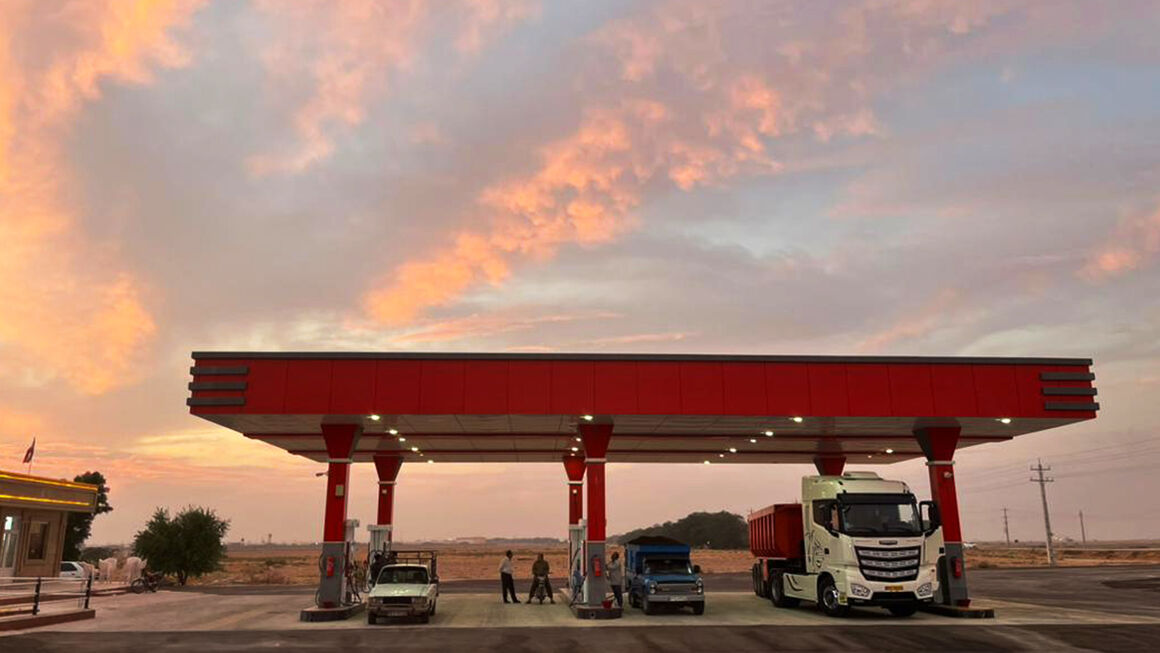The stable and timely supply of essential fuels, particularly diesel, mazut, and gasoline, is a cornerstone of maintaining economic stability and energy security in Iran.
The 14th administration, through optimized management and the implementation of various initiatives, has taken effective steps to boost fuel production capacity and meet domestic demand. This report analyzes changes in fuel production in 1403 compared to the first five months of the year, examining the impact of these measures and the government’s role in this progress.
Diesel production surpasses targets
Diesel, a critical fuel for industries and transportation, is widely used in machinery and power plants. Given its high consumption in industrial nations, ensuring its stable production and supply is a key energy management challenge. In the first five months of 1403, diesel production averaged 111.2 million liters per day. By the ninth month of Iranian calendar (Azar), production had risen by approximately 12% to 124.1 million liters per day.
This 13-million-liter increase in diesel production over the four-month period marks a significant achievement for the 14th administration, reflecting efforts to enhance refinery capacity, address infrastructure issues, and improve production efficiency.
Notably, diesel production in Azar exceeded the Oil Ministry’s target of 111.3 million liters per day and showed a 10% increase compared to corresponding figure of last year, when production stood at 112 million liters per day.
From September to December, average daily Diesel production reached 117 million liters, a 5% increase compared to the same period in 2023 (111 million liters) and a 10% increase compared to 2022 (106 million liters).
Mazut production grows by 15%
Mazut plays a vital role in industries such as power generation, maritime transport, and chemicals. In the first five months of 1403, daily mazut production averaged 65 million liters, rising by 8.5% to 70.5 million liters per day in December.
The sixth month of Iranian calendar month (Shahrivar) mazut production (70.5 million liters per day) marked a 4% increase compared to the related figure for preceding year (67.6 million liters per day) and exceeded the Oil Ministry’s 2024 target by 9 million liters, reflecting a 15% growth.
The 6-million-liter increase in mazut production during the first four months of the 14th administration, compared to the five-month average, was achieved through improved management and streamlined production and distribution processes.
This ensured a stable fuel supply for power plants and strategic industries, preventing potential crises caused by increased gas consumption in the residential and commercial sectors during winter.
Gasoline production rises by 11%
In the first five months of the current Iranian year, daily gasoline production averaged 97 million liters, increasing by approximately 11% to 107.1 million liters per day by Shahrivar. Compared to related figure for 2023 (97 million liters per day), production grew by 11%, exceeding the Oil Ministry’s 1403 target of 94 million liters per day by 14%.
Average daily gasoline production during the first four months of the 14th administration increased by 7.9 million liters (8%) compared to 2023 and by 6.6 million liters (7%) compared to 2022.
Diesel deliveries to power plants jump by 47%
In the first five months of 2024, average daily diesel deliveries to power plants stood at 23 million liters, surging to 51 million liters per day in Shahrivar. This 50% increase reflects precise planning and optimized fuel supply processes during peak consumption periods.
Shahrivar diesel deliveries to power plants more than doubled the Oil Ministry’s target of 25 million liters per day and marked a 47% increase compared to the figure for preceding year (34 million liters per day), setting a record for the National Iranian Oil Refining and Distribution Company.
Over the four-month period, diesel deliveries to power plants increased by 1,238 million liters (45%) compared to the same period in 2023 and by 950 million liters (31%) compared to 2022.
Mazut deliveries to power plants rise by 25%
In the first five months of the current Iranian year, daily mazut deliveries to power plants averaged 22 million liters, increasing to 25 million liters per day in Shahrivar. This marked a 14% increase compared to the five-month average and a 25% rise compared to the related figure for preceding year (20 million liters per day).
From Shahrivar to Azar, mazut deliveries to power plants increased by 1,100 million liters (60%) compared to the same period in 2023 and by 646 million liters (28%) compared to 2022.
Liquid fuel deliveries grow by over 50%
From the start of the 14th administration to Azar, liquid fuel deliveries to power plants increased by 2,338 million liters (51%) compared to the same period in 2023 and by 1,596 million liters (30%) compared to 2022.
Timely and sufficient liquid fuel deliveries in 2024 highlight the 14th administration’s effective measures to improve fuel supply for the energy sector, ensuring grid stability and preventing energy crises during winter.
Key initiatives by the National Iranian Oil Refining and Distribution Company included adding 1,882 active vehicles to the liquid fuel distribution network, launching the Bandar Abbas-Sirjan-Rafsanjan pipeline, connecting the Sarv in Yazd and Kashan power plants to the product transfer pipeline, and increasing incentives for road transport fleets to expedite fuel deliveries.


Your Comment